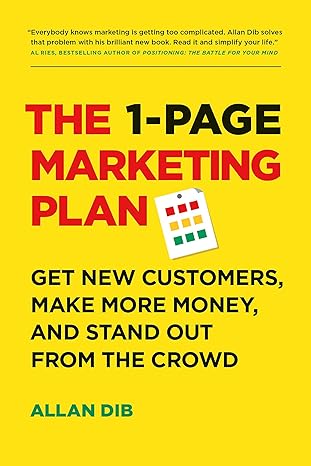**Disclosure:** We believe in honesty and transparency to the fullest extent. Some of the links on this blog are affiliate links, meaning, at no additional cost to you, we will earn a commission if you click through and make a purchase. This is one of the simplest ways you can support us.
Introduction
Every aspiring entrepreneur harbors the hope of launching a successful business. Yet, before leaping into a new venture, it’s critical to assess its potential for profitability. Many business ideas falter not due to a lack of passion or effort but because they fail to meet a real market need or aren’t financially viable. This detailed guide will provide you with a structured approach to evaluate the economic potential of your idea, helping you to discern whether your concept could turn into a profitable enterprise or if it’s more likely to drain your resources. By systematically analyzing key factors such as market demand, cost structures, and revenue models, you will be better equipped to make informed decisions and set the foundation for a successful business.

Conduct Comprehensive Market Research:
Understanding the market dynamics is the first step in assessing a business idea. Conducting comprehensive market research is crucial for several reasons when evaluating a business idea, as it lays the foundation for many strategic decisions that will shape the future of the venture.
Why Market Research is Important
- Understanding Market Needs: Market research helps you understand what potential customers really need, which may not always align with initial assumptions. This insight allows you to develop or tweak your product or service to better satisfy those needs.
- Identifying Target Customers: Research helps you identify who your customers are, what they like, and how they behave. This demographic and psychographic information is vital for crafting targeted marketing strategies and offerings.
- Assessing Market Viability: Comprehensive market research determines if there is a viable market for your product or service. It helps estimate the size of the market and whether it’s growing, stable, or declining, which can influence the timing and scale of your launch.
- Minimizing Risk: By providing data on what works and what doesn’t in the current market, market research minimizes the risks associated with new business ventures. This data-driven approach can prevent costly mistakes such as entering an overly saturated market or misjudging customer demand.
- Benchmarking and Positioning: It allows you to benchmark against competitors and effectively position your offering in the market, highlighting your unique selling proposition (USP) that sets you apart.
Analyze Your Competition:
Gaining insights into your competitors is crucial for positioning your product.
- Unique Selling Proposition (USP): Ensure your product or service offers something unique that sets it apart.
- Market Saturation: Too much competition can limit profitability; identify how saturated the market is.
Analyzing your competition is a critical step in understanding your own position within the market and identifying potential advantages and challenges.
Here’s a structured approach to effectively analyze your competitors:
Start by identifying direct competitors who offer the same or similar products or services, as well as indirect competitors who may satisfy the same customer needs with different products or services.
Collect as much data as you can on each competitor. This includes:
- Business Model: Understand how they operate and generate revenue.
- Product Offerings: Look at the range of products or services they offer.
- Pricing Structure: Note their pricing and any discounts or loyalty programs.
- Market Share: Estimate their share of the market.
- Customer Base: Identify who their customers are and their customer loyalty.
- Marketing Strategies: Analyze their promotional activities, online presence, and sales tactics.
- Distribution Channels: See how they deliver their products or services to customers.
- Financial Health: If available, review financial data like sales volume and profit margins.
- Reputation: Gather insights from customer reviews, media mentions, and industry awards.
For each competitor, determine their strengths (what they do well) and weaknesses (where they falter). This could involve aspects such as customer service, innovation, product quality, or marketing prowess.
Try to deduce their business strategy. Are they cost leaders, focused on being the lowest-cost producer? Do they compete on differentiation, focusing on quality or unique features? Understanding this will help you position your business effectively.
Keep an ongoing watch on your competitors’ actions, such as:
- New Product Launches
- Changes in Pricing
- Marketing Campaigns
- Expansion into new markets
- Strategic partnerships or acquisitions
From the analysis, identify any opportunities that arise from competitors’ weaknesses or gaps in their offerings. Similarly, recognize threats posed by competitors’ strengths or strategic moves.
Based on your findings, develop or adjust your business strategy to leverage your strengths, counteract competitors’ strengths, exploit their weaknesses, and mitigate risks to your own business.
Competitive analysis is not a one-time task but an ongoing process. Regularly updating the data will keep you informed about market changes and allow you to remain competitive.
By following these steps, you can gain a comprehensive understanding of your competitive landscape and use this knowledge to carve out a strategic position in the market that plays to your strengths and adapts to the evolving environment.
Conduct a Thorough Cost Analysis:
Know your numbers to anticipate the financial aspects of your business.
- Fixed Costs: Regular expenses such as rent, salaries.
- Variable Costs: Costs that vary with production volume, like materials and shipping.
- Break-even Analysis: Calculate how much you need to sell to cover all costs.
Develop a Strategic Pricing Model:
Setting the right price is vital for profitability.
- Value-Based Pricing: Price your product based on the perceived value to the customer.
- Competitive Pricing: Ensure your pricing is in line with or better than competitors while still maintaining a healthy margin.
Evaluate Scalability:
Determine if your business can grow without a corresponding increase in costs.
Scalability is a crucial aspect to consider when assessing the potential profitability of a business idea. It involves determining whether your business can expand its operations and increase revenue without a proportional increase in costs. This factor is especially important because it impacts the long-term viability and growth potential of the enterprise.

Scalability in Business Context: A scalable business model allows for increased revenue growth while maintaining or minimally increasing operational costs. This means that as sales volume goes up, the additional cost of producing the product or delivering the service does not rise significantly. This characteristic is vital for sustaining growth without eroding profit margins.
Evaluating Scalability in Different Business Models
- Service-based Businesses:
- Scalability in service-oriented businesses can be challenging since they often rely heavily on human resources. Growth typically requires hiring more staff, which can significantly increase costs. However, strategies such as leveraging technology for automation, outsourcing certain services, or offering training to improve employee efficiency can enhance scalability.
- Product-based Businesses:
- Physical products often face challenges in scaling due to inventory management, manufacturing, and distribution costs. However, adopting a drop shipping model, where products are shipped directly from the supplier to the customer, can mitigate these challenges.
- Hybrid Businesses:
- Businesses that combine elements of both product and service offerings can optimize scalability by balancing the two. For example, a software company may offer the product itself along with premium support services.
Prototype and Test Your Idea:
Validate your business idea with a real-world test.
- Pilot Projects: Launch a small-scale version to measure its practical viability and refine the concept based on real user feedback.
Plan for Diverse Revenue Streams:
Consider multiple channels of income beyond direct sales.
- Subscription Models: Provide a steady, predictable revenue stream.
- Partnerships: Explore affiliate marketing or collaborations with other businesses for additional revenue.
Navigate Regulatory and Legal Landscapes:
Ensure compliance with relevant laws to avoid costly legal issues.
Assess Adaptability:
The ability to pivot and adapt to market changes is crucial.
- Pivot Potential: Can you shift your business model if the original plan doesn’t work as expected?
Seek Professional Advice:
Expert perspectives can provide critical insights and validation.
- Mentors and Business Coaches: Leverage experienced advisors to avoid common pitfalls.
- Financial Advisors: Understand the financial projections and potential returns more clearly.
Conclusion:
While no strategy guarantees business success, following these comprehensive steps can enhance your understanding of your business idea’s profitability potential. Remember, the world’s leading businesses began as simple ideas that were well-executed and continually adapted to market needs. With the right approach and resources, your business idea stands a better chance of becoming a profitable reality.










